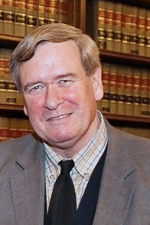***Submission Deadline August 1***
Call for Papers: Annual Review of Interdisciplinary Justice Research, Volume 6.
THEME
“Placing Justice”: Place and space are foundational concepts across the humanities and social sciences. Ideas about justice shape and are shaped by place and space. Our definitions of justice, place, and space are broad and inclusive. We invite submissions representing historical, geographic, legal, cultural, feminist, philosophical, criminological, and artistic takes on justice, place, and space; reflections, research, and exhibitions on justice, place, and space; area-based approaches to justice and space including, but not limited to, social justice, ecological justice, urban justice, decolonization, and human rights; religion, place, and cities; proxemics and justice; spatial explorations of crime and fear of crime; virtual spaces of justice; zones of exclusion; as well as cartographic and photographic exposures of these topics. We invite works on cities and urbanization, rural criminology, the role of location and geography in criminal justice, crime prevention through environmental design, and the use of spatial methods in the justice disciplines. We welcome submissions from scholars of all disciplinary backgrounds, as well as from students, community organizations, justice professionals, artists, activists and anyone who wishes to partake in an intellectual engagement with justice, place, and space.
“Placing Justice”: Place and space are foundational concepts across the humanities and social sciences. Ideas about justice shape and are shaped by place and space. Our definitions of justice, place, and space are broad and inclusive. We invite submissions representing historical, geographic, legal, cultural, feminist, philosophical, criminological, and artistic takes on justice, place, and space; reflections, research, and exhibitions on justice, place, and space; area-based approaches to justice and space including, but not limited to, social justice, ecological justice, urban justice, decolonization, and human rights; religion, place, and cities; proxemics and justice; spatial explorations of crime and fear of crime; virtual spaces of justice; zones of exclusion; as well as cartographic and photographic exposures of these topics. We invite works on cities and urbanization, rural criminology, the role of location and geography in criminal justice, crime prevention through environmental design, and the use of spatial methods in the justice disciplines. We welcome submissions from scholars of all disciplinary backgrounds, as well as from students, community organizations, justice professionals, artists, activists and anyone who wishes to partake in an intellectual engagement with justice, place, and space.
AIMS AND SCOPE
The Annual Review of Interdisciplinary Justice Research (IJR) is a double blind peer review journal that publishes articles dealing with thematic issues in law and justice, and related disciplines. The idea began in response to our first conference, “Theorizing Justice”, when Fernwood Press and some members of CIJS collaborated in publishing a peer reviewed collection of academic papers as a reader entitled Thinking About Justice. Subsequently we have published five annual volumes engaging the themes of our conference calls.
We welcome submissions from across the disciplines and beyond. Past contributors have been notable academics, theorists, policy specialists, activists, justice practitioners, lawyers, and graduate students. The topics of the papers we have published span the disciplines of law, criminal justice, criminology, constitutional theory, sociology of law, psychology of law, politics, culture and media analysis of justice, poverty and its intersection with justice issues, Indigenous issues of justice, law and justice and economic justice.
PEER REVIEW
Regardless of the source of the submission, we embark on a double blind peer review process to ensure that the quality of our publications meets the requisite academic standards. Articles are anonymized and then submitted, after editorial review, to three anonymous expert reviewers. Articles will be accepted, accepted with revisions, encouraged to revise and resubmit, or rejected.
SUMMARY OF GUIDELINES
Normally, manuscripts should range between 6000-7000 words including all references and notes. You should remove all identifying information from the body of the manuscript and your identifying information should appear on a cover page, along with contact information, including your email address. Your work should include an abstract of under 250 words and a title. Please email submissions in MS Word file format.
More detailed submission guidelines can be found on our webpage: http://www.cijs.ca
We encourage those submitting artistic works to submit a short reflection of 500-1000 words on their work.
Please email your manuscripts to:
Dr. Steven Kohm, Editor
Mailing Address:
Annual Review of Interdisciplinary Justice Research
Centre for Interdisciplinary Justice Studies
University of Winnipeg
515 Portage Avenue
Winnipeg, MB R3B2E9

